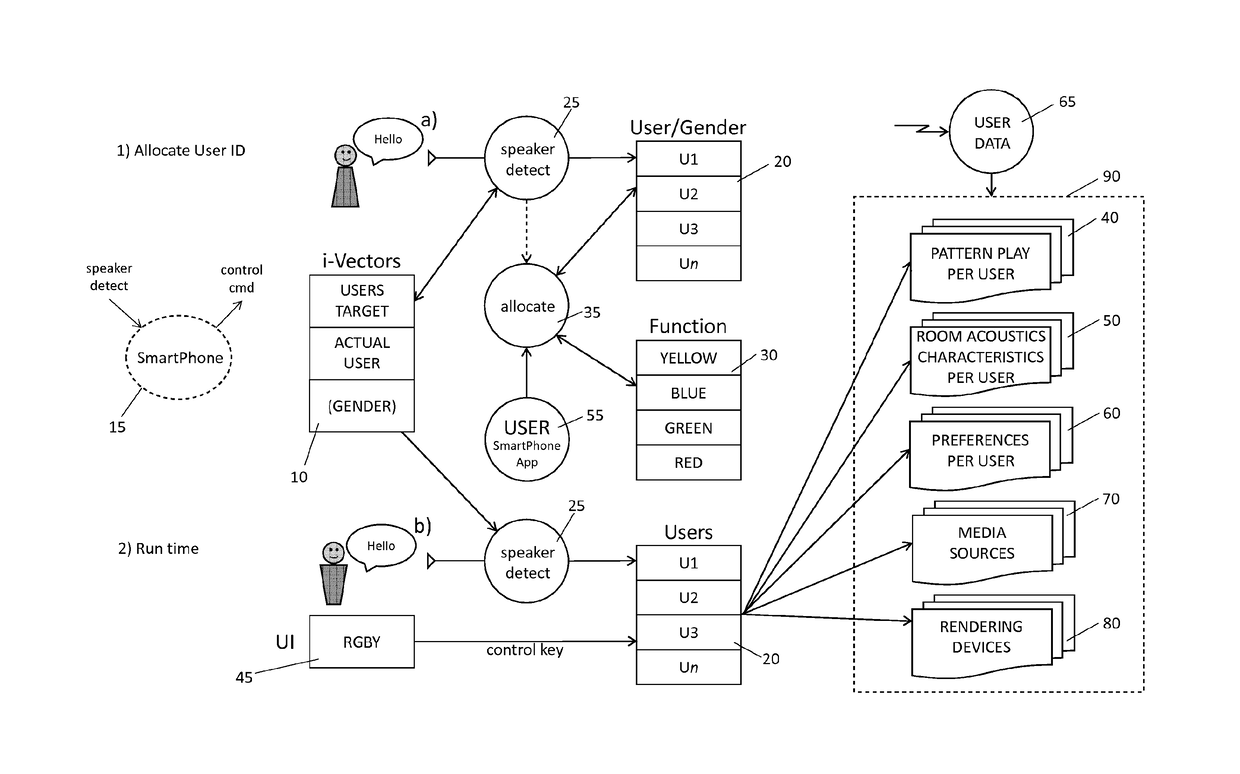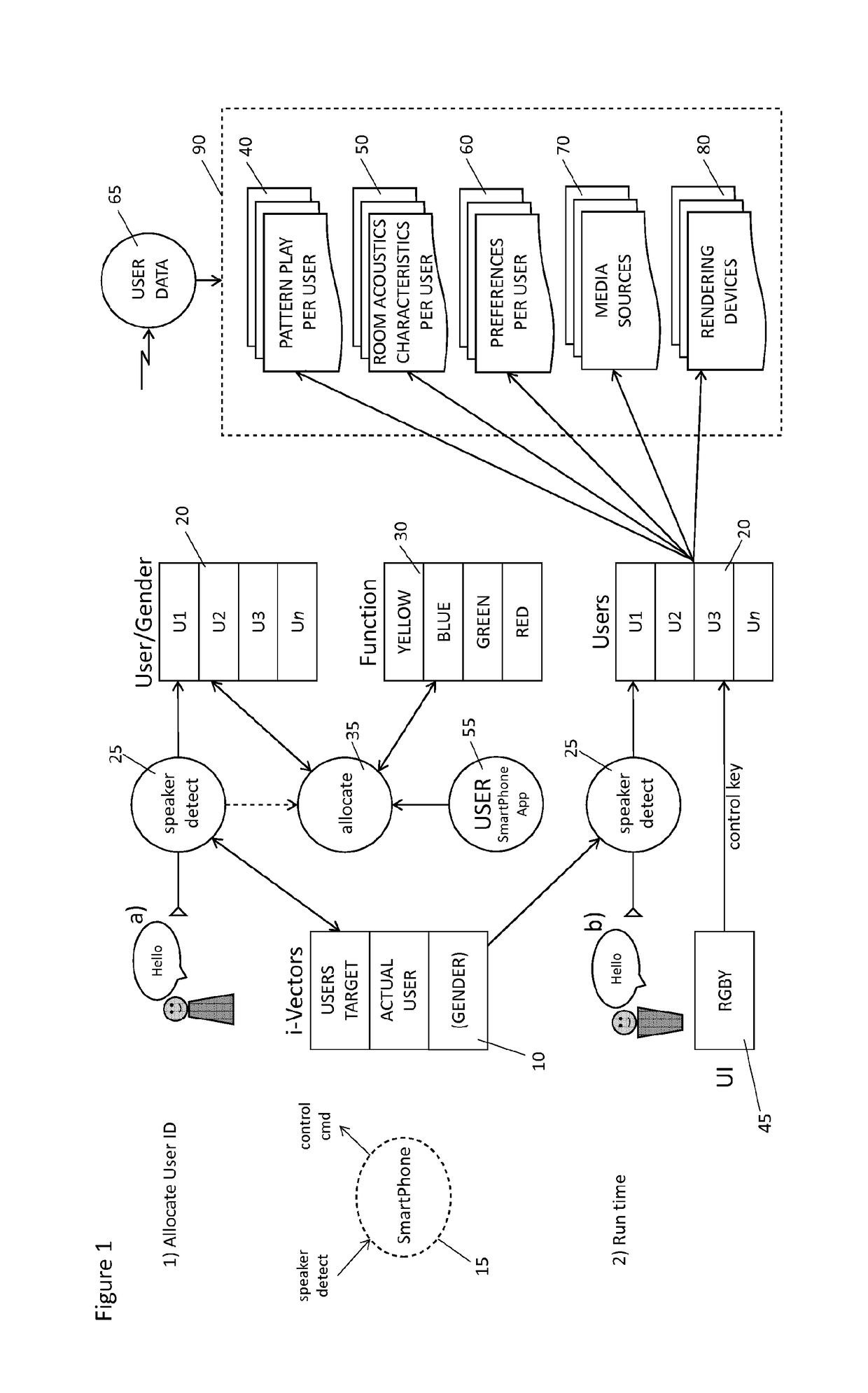Speaker recognition in multimedia system
a multimedia system and speaker technology, applied in the field of speaker recognition, can solve the problems of inconvenient user requirements, adversely affecting speaker recognition performance, and home appliances such as av systems and media servers do not operate in a real multi-user environment, so as to improve improve the initial alignment of the total variability matrix, and improve the effect of the performance of the first approach
- Summary
- Abstract
- Description
- Claims
- Application Information
AI Technical Summary
Benefits of technology
Problems solved by technology
Method used
Image
Examples
Embodiment Construction
[0071]The overall technology relates to how a multiple number of users may interact with a number of sources of multimedia information, to gain access to, and control of, those sources of information.
[0072]The available information to access and control is individual according to predefined access rights and functional features and options per user, and optionally according to a number of preferences defined per user by the user him / herself.
[0073]The user may gain access to the source of information and must possess the necessary rights to provide the accessed information onto a destination device, e.g. playing a specific music file (source) on a dedicated set of speakers (destination).
[0074]The sources of information may be controlled by the user via wireless and portable remote control devices. An individual user is logically related to one dedicated remote controller; this implies that the remote controller becomes a device that reflects and provides to the specific user, only re...
PUM
 Login to View More
Login to View More Abstract
Description
Claims
Application Information
 Login to View More
Login to View More - R&D
- Intellectual Property
- Life Sciences
- Materials
- Tech Scout
- Unparalleled Data Quality
- Higher Quality Content
- 60% Fewer Hallucinations
Browse by: Latest US Patents, China's latest patents, Technical Efficacy Thesaurus, Application Domain, Technology Topic, Popular Technical Reports.
© 2025 PatSnap. All rights reserved.Legal|Privacy policy|Modern Slavery Act Transparency Statement|Sitemap|About US| Contact US: help@patsnap.com



